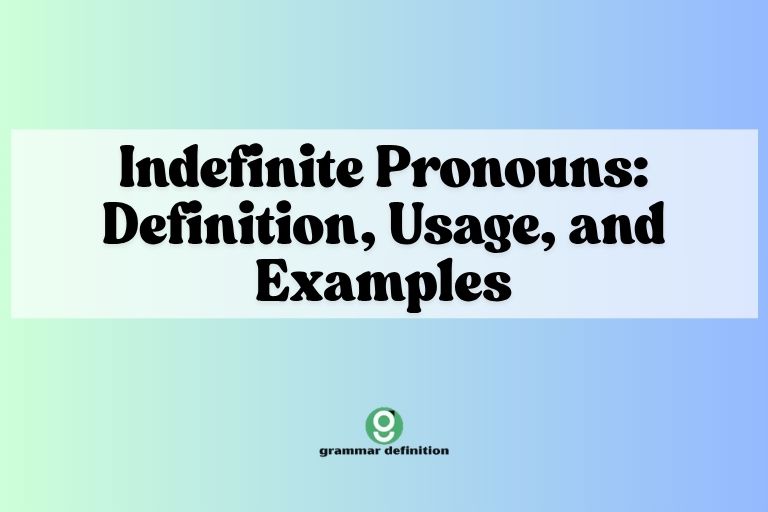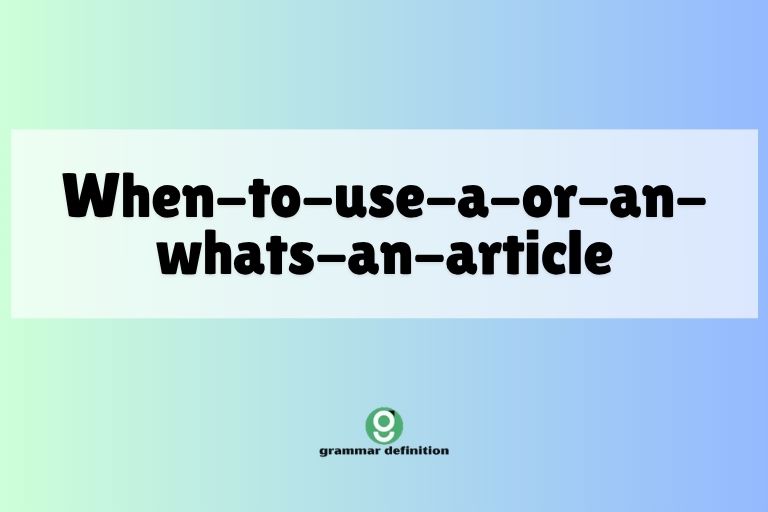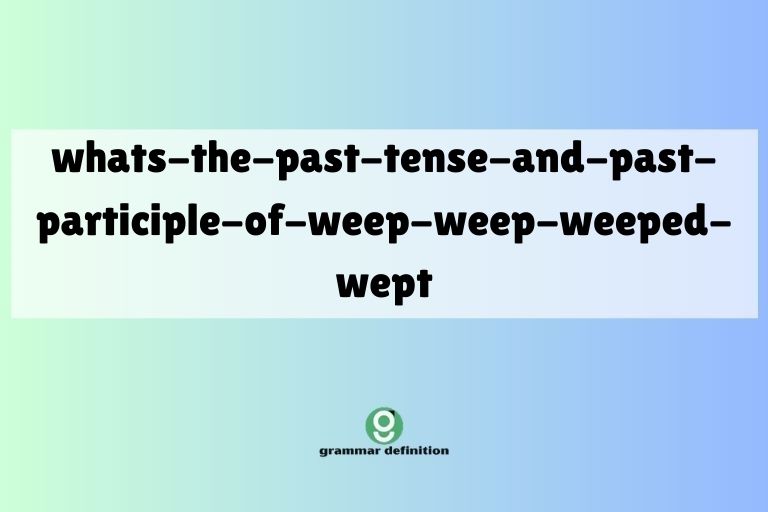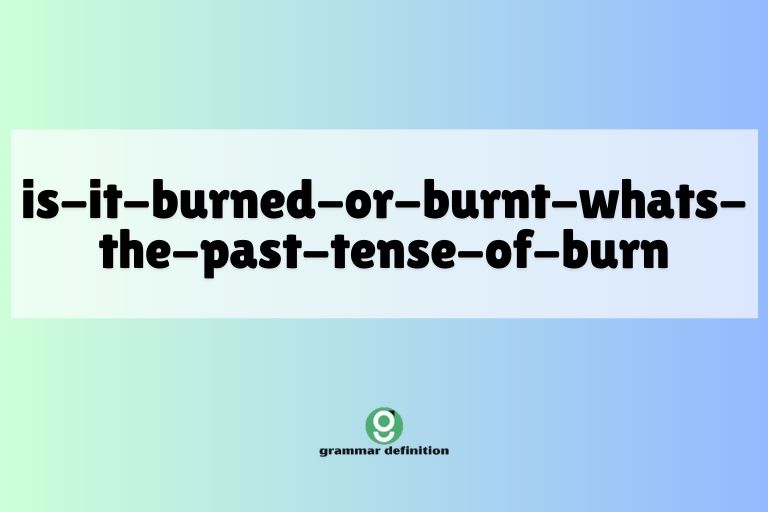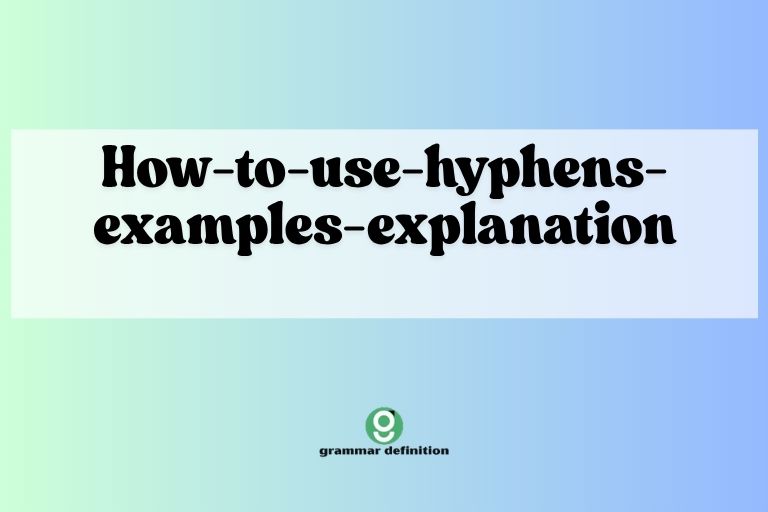Regular Verbs: Definition, Usage, and Comprehensive Examples
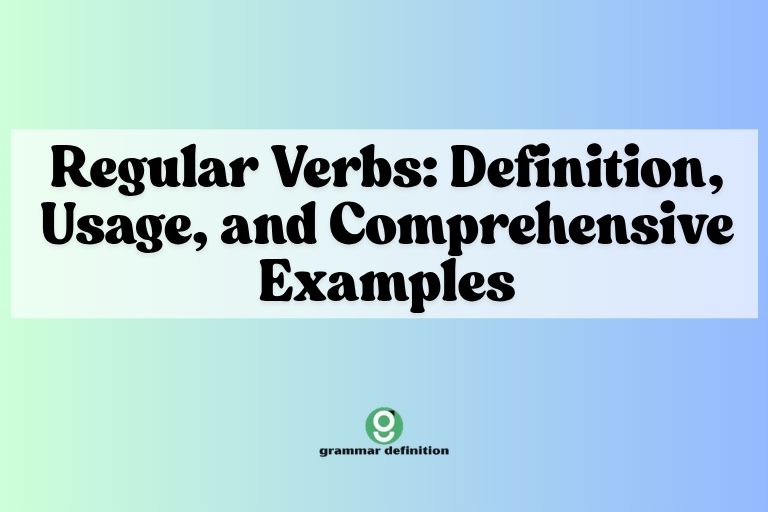
Understanding regular verbs is fundamental to mastering English grammar. Regular verbs follow a predictable pattern for forming their past tense and past participle forms, making them easier to learn and use compared to irregular verbs.
This article provides a comprehensive guide to regular verbs, covering their definition, structure, usage rules, common mistakes, and advanced topics. Whether you are a beginner or an advanced learner, this guide will enhance your understanding and application of regular verbs in your writing and speaking.
By the end of this article, you will be able to identify regular verbs, correctly conjugate them in various tenses, and avoid common errors. The numerous examples and practice exercises will give you ample opportunity to reinforce your learning and improve your fluency in English.
Table of Contents
- Definition of Regular Verbs
- Structural Breakdown of Regular Verbs
- Types or Categories of Regular Verbs
- Examples of Regular Verbs
- Usage Rules for Regular Verbs
- Common Mistakes with Regular Verbs
- Practice Exercises
- Advanced Topics on Regular Verbs
- Frequently Asked Questions (FAQ)
- Conclusion
Definition of Regular Verbs
A regular verb is a verb that forms its past tense and past participle by adding -ed or -d to the base form of the verb. This consistent pattern distinguishes regular verbs from irregular verbs, which have unpredictable forms. Understanding the definition of regular verbs is crucial because it simplifies verb conjugation and enhances grammatical accuracy.
Regular verbs are predictable and follow a standard pattern, making them easier to learn and use. In contrast, irregular verbs require memorization of their unique forms.
The simplicity of regular verbs allows learners to focus on other aspects of sentence construction and communication.
The function of regular verbs is to express actions or states in the past. They are essential for narrating events, describing past experiences, and providing information about completed actions.
The consistent form of regular verbs ensures clarity and uniformity in expressing past events.
Classification of Regular Verbs
Regular verbs can be classified based on the modifications they undergo when forming the past tense and past participle. The most common classification involves adding -ed to the base form. However, there are variations depending on the verb’s ending.
- Add -ed: Most regular verbs simply add -ed to the base form (e.g., work becomes worked).
- Add -d: Verbs ending in -e add only -d (e.g., bake becomes baked).
- Double the final consonant: If a verb ends in a single consonant preceded by a single vowel, the consonant is doubled before adding -ed (e.g., stop becomes stopped).
- Change -y to -i: If a verb ends in -y preceded by a consonant, the -y is changed to -i before adding -ed (e.g., study becomes studied).
Structural Breakdown of Regular Verbs
The structural breakdown of regular verbs focuses on how they are formed in the past tense and past participle. The base form of the verb serves as the foundation, and specific rules dictate how the -ed suffix is added or modified.
The structure of regular verbs is straightforward. The base form is the infinitive without “to” (e.g., walk in “to walk”). The past tense and past participle are formed by adding -ed, -d, or modifying the ending as described above. This consistency simplifies verb conjugation.
Understanding the structural elements helps learners correctly form the past tense and past participle of regular verbs. This knowledge is essential for constructing grammatically accurate sentences and communicating effectively in English.
Base Form
The base form of a verb is its simplest form, used in the present tense (except for the third-person singular) and as the infinitive without ‘to.’ It’s the foundation upon which other verb forms are built. For example, the base form of “to walk” is “walk.”
Past Tense
The past tense indicates an action or state that occurred in the past. For regular verbs, the past tense is formed by adding -ed or -d to the base form. For example, the past tense of “walk” is “walked,” and the past tense of “bake” is “baked.”
Past Participle
The past participle is used in perfect tenses (e.g., present perfect, past perfect, future perfect) and in passive voice constructions. For regular verbs, the past participle is identical to the past tense. For example, the past participle of “walk” is “walked,” and the past participle of “bake” is “baked.”
Types or Categories of Regular Verbs
While all regular verbs follow the same basic pattern, they can be categorized based on their spelling and the specific rules that apply when adding the -ed suffix. These categories help to clarify the nuances of regular verb formation.
Understanding these categories enhances learners’ ability to correctly conjugate regular verbs. Recognizing the spelling patterns and applying the appropriate rules ensures grammatical accuracy and fluency in English.
Verbs That Simply Add -ed
This is the most common category. Verbs in this group simply add -ed to the base form without any other changes. Examples include work, play, jump, and paint.
Verbs That Add -d
Verbs that end in -e only need -d added to form the past tense and past participle. Examples include bake, dance, like, and hope.
Verbs That Double the Final Consonant
These verbs end in a single consonant preceded by a single vowel. The final consonant is doubled before adding -ed. Examples include stop, plan, drop, and permit. Note that this rule only applies when the stress is on the last syllable. For example, “visit” does not double the ‘t’ because the stress is on the first syllable.
Verbs That Change -y to -i
If a verb ends in -y preceded by a consonant, the -y is changed to -i before adding -ed. Examples include study, cry, try, and carry. If the -y is preceded by a vowel, the -y remains unchanged, and -ed is simply added (e.g., play becomes played).
Examples of Regular Verbs
The following tables provide extensive examples of regular verbs, categorized by their specific formation rules. Each table includes the base form, past tense, and past participle of the verb, illustrating the consistent patterns of regular verb conjugation.
These examples serve as a reference for learners to understand and apply the rules of regular verb formation. By studying these examples, learners can improve their ability to correctly conjugate regular verbs in various contexts.
Examples of Verbs That Simply Add -ed
This table shows regular verbs that add “-ed” to form the past tense and past participle.
| Base Form | Past Tense | Past Participle |
|---|---|---|
| Walk | Walked | Walked |
| Talk | Talked | Talked |
| Work | Worked | Worked |
| Play | Played | Played |
| Jump | Jumped | Jumped |
| Paint | Painted | Painted |
| Clean | Cleaned | Cleaned |
| Cook | Cooked | Cooked |
| Watch | Watched | Watched |
| Wash | Washed | Washed |
| Help | Helped | Helped |
| Visit | Visited | Visited |
| Learn | Learned | Learned |
| Open | Opened | Opened |
| Close | Closed | Closed |
| Start | Started | Started |
| Finish | Finished | Finished |
| Answer | Answered | Answered |
| Call | Called | Called |
| Ask | Asked | Asked |
| Enjoy | Enjoyed | Enjoyed |
| Believe | Believed | Believed |
| Seem | Seemed | Seemed |
| Need | Needed | Needed |
| Remember | Remembered | Remembered |
| Consider | Considered | Considered |
| Appear | Appeared | Appeared |
| Develop | Developed | Developed |
Examples of Verbs That Add -d
This table shows regular verbs that add “-d” to form the past tense and past participle, as these verbs already end in “-e.”
| Base Form | Past Tense | Past Participle |
|---|---|---|
| Bake | Baked | Baked |
| Dance | Danced | Danced |
| Like | Liked | Liked |
| Hope | Hoped | Hoped |
| Love | Loved | Loved |
| Hate | Hated | Hated |
| Smile | Smiled | Smiled |
| Close | Closed | Closed |
| Invite | Invited | Invited |
| Advise | Advised | Advised |
| Agree | Agreed | Agreed |
| Believe | Believed | Believed |
| Imagine | Imagined | Imagined |
| Use | Used | Used |
| Complete | Completed | Completed |
| Provide | Provided | Provided |
| Share | Shared | Shared |
| Taste | Tasted | Tasted |
| Waste | Wasted | Wasted |
| Admire | Admired | Admired |
| Amuse | Amused | Amused |
| Please | Pleased | Pleased |
| Realize | Realized | Realized |
| Refuse | Refused | Refused |
| Surprise | Surprised | Surprised |
| Value | Valued | Valued |
Examples of Verbs That Double the Final Consonant
This table shows regular verbs where the final consonant is doubled before adding “-ed.”
| Base Form | Past Tense | Past Participle |
|---|---|---|
| Stop | Stopped | Stopped |
| Plan | Planned | Planned |
| Drop | Dropped | Dropped |
| Wrap | Wrapped | Wrapped |
| Trip | Tripped | Tripped |
| Admit | Admitted | Admitted |
| Commit | Committed | Committed |
| Regret | Regretted | Regretted |
| Submit | Submitted | Submitted |
| Prefer | Preferred | Preferred |
| Occur | Occurred | Occurred |
| Control | Controlled | Controlled |
| Refer | Referred | Referred |
| Cancel | Cancelled | Cancelled |
| Travel | Travelled | Travelled |
| Signal | Signalled | Signalled |
| Label | Labelled | Labelled |
| Model | Modelled | Modelled |
| Worship | Worshipped | Worshipped |
| Kidnap | Kidnapped | Kidnapped |
| Benefit | Benefitted | Benefitted |
| Target | Targetted | Targetted |
| Equal | Equalled | Equalled |
| Program | Programmed | Programmed |
| Handicap | Handicapped | Handicapped |
Examples of Verbs That Change -y to -i
This table shows regular verbs where “-y” changes to “-i” before adding “-ed.”
| Base Form | Past Tense | Past Participle |
|---|---|---|
| Study | Studied | Studied |
| Cry | Cried | Cried |
| Try | Tried | Tried |
| Carry | Carried | Carried |
| Worry | Worried | Worried |
| Marry | Married | Married |
| Hurry | Hurried | Hurried |
| Reply | Replied | Replied |
| Apply | Applied | Applied |
| Satisfy | Satisfied | Satisfied |
| Occupy | Occupied | Occupied |
| Identify | Identified | Identified |
| Terrify | Terrified | Terrified |
| Specify | Specified | Specified |
| Justify | Justified | Justified |
| Modify | Modified | Modified |
| Defy | Defied | Defied |
| Comply | Complied | Complied |
| Deny | Denied | Denied |
| Empty | Emptied | Emptied |
| Falsify | Falsified | Falsified |
| Fortify | Fortified | Fortified |
| Glorify | Glorified | Glorified |
| Imply | Implied | Implied |
| Multiply | Multiplied | Multiplied |
| Notify | Notified | Notified |
| Qualify | Qualified | Qualified |
Usage Rules for Regular Verbs
Understanding the usage rules for regular verbs is essential for constructing grammatically correct sentences. These rules govern how regular verbs are conjugated in different tenses and contexts.
The consistent pattern of regular verbs simplifies their usage, but it is important to follow the specific rules for each tense. This ensures clarity and accuracy in communication.
Simple Past Tense
The simple past tense is used to describe actions that were completed in the past. For regular verbs, the simple past tense is formed by adding -ed or -d to the base form.
Example: “I walked to the store yesterday.”
Past Continuous Tense
The past continuous tense is used to describe actions that were in progress at a specific time in the past. It is formed using “was/were” + the present participle (verb + -ing).
Example: “She was watching TV when I called.”
Past Perfect Tense
The past perfect tense is used to describe an action that was completed before another action in the past. It is formed using “had” + the past participle.
Example: “They had finished their work before the meeting started.”
Past Perfect Continuous Tense
The past perfect continuous tense describes an action that had been in progress for a period of time before another action in the past. It is formed using “had been” + the present participle (verb + -ing).
Example: “He had been studying for hours before he fell asleep.”
Passive Voice
Regular verbs are also used in the passive voice to indicate that the subject is acted upon. The passive voice is formed using “be” + the past participle.
Example: “The cake was baked by my mother.”
Common Mistakes with Regular Verbs
Even though regular verbs are generally straightforward, learners often make common mistakes. Recognizing and correcting these errors is crucial for improving grammatical accuracy.
The following examples illustrate common mistakes and provide the correct alternatives. By understanding these mistakes, learners can avoid them in their own writing and speaking.
| Incorrect | Correct | Explanation |
|---|---|---|
| I have walk to the park. | I have walked to the park. | The past participle “walked” is required after “have.” |
| She use to live here. | She used to live here. | The correct form is “used to,” which indicates a past habit. |
| They are interest in the topic. | They are interested in the topic. | The correct form is “interested,” which describes a feeling or state. |
| He stoped at the store. | He stopped at the store. | The final consonant should be doubled before adding “-ed.” |
| She studyed hard for the exam. | She studied hard for the exam. | The “-y” should be changed to “-i” before adding “-ed.” |
| We be invited to the party. | We were invited to the party. | The correct form of “be” (were) is required for the past passive. |
| I am agree with you. | I agree with you. | “Agree” is a verb and doesn’t need “am” in the present simple. |
| She has finish the project. | She has finished the project. | The past participle “finished” is required after “has.” |
| They are play in the garden yesterday. | They played in the garden yesterday. | The simple past tense “played” is required to indicate a completed action in the past. |
| He use to smoke. | He used to smoke. | “Used to” indicates a past habit. |
Practice Exercises
These practice exercises will help you reinforce your understanding of regular verbs. Complete the sentences by filling in the correct form of the verb provided in parentheses.
Each exercise focuses on different aspects of regular verb usage, including the simple past tense, past participle, and passive voice. The answers are provided below to help you check your work.
Exercise 1: Simple Past Tense
Fill in the blanks with the simple past tense form of the verb in parentheses.
| Question | Answer |
|---|---|
| 1. I ________ (walk) to school yesterday. | 1. walked |
| 2. She ________ (cook) dinner for her family last night. | 2. cooked |
| 3. They ________ (play) football in the park. | 3. played |
| 4. He ________ (watch) a movie on TV. | 4. watched |
| 5. We ________ (clean) the house on Saturday. | 5. cleaned |
| 6. The baby ________ (cry) all night. | 6. cried |
| 7. She ________ (study) hard for the exam. | 7. studied |
| 8. The rain ________ (stop) suddenly. | 8. stopped |
| 9. They ________ (dance) at the party. | 9. danced |
| 10. He ________ (plan) a trip to Europe. | 10. planned |
Exercise 2: Past Participle
Fill in the blanks with the past participle form of the verb in parentheses.
| Question | Answer |
|---|---|
| 1. The letter has been ________ (mail). | 1. mailed |
| 2. The food was ________ (cook) by my mother. | 2. cooked |
| 3. The house has been ________ (clean). | 3. cleaned |
| 4. The car was ________ (wash) yesterday. | 4. washed |
| 5. The book has been ________ (read) by many people. | 5. read |
| 6. The problem was ________ (solve) quickly. | 6. solved |
| 7. All the tickets were ________ (sell) out. | 7. sold |
| 8. The documents had been ________ (sign). | 8. signed |
| 9. The plants were ________ (water) this morning. | 9. watered |
| 10. The clothes have been ________ (iron). | 10. ironed |
Exercise 3: Correct the Mistakes
Identify and correct the mistakes in the following sentences.
| Question | Answer |
|---|---|
| 1. She have walked to school. | 1. She has walked to school. |
| 2. He use to play the guitar. | 2. He used to play the guitar. |
| 3. They are interest in art. | 3. They are interested in art. |
| 4. I stoped at the bakery. | 4. I stopped at the bakery. |
| 5. She studyed English last year. | 5. She studied English last year. |
| 6. We be invited to the concert. | 6. We were invited to the concert. |
| 7. I am agree with his opinion. | 7. I agree with his opinion. |
| 8. She has finish her homework. | 8. She has finished her homework. |
| 9. They are play in the park now. | 9. They are playing in the park now. |
| 10. He use to smoke cigarettes. | 10. He used to smoke cigarettes. |
Advanced Topics on Regular Verbs
For advanced learners, there are several more complex aspects of regular verbs to explore, including nuanced usage in different contexts and variations in regional dialects.
These advanced topics delve deeper into the subtleties of regular verb usage, providing a more comprehensive understanding of their role in the English language.
Dialectal Variations
In some regional dialects, the pronunciation of -ed endings may vary. For example, in certain dialects, the -ed ending may be pronounced as a separate syllable, while in others, it may be elided (omitted). These variations can affect the perceived regularity of verbs.
Formal vs. Informal Writing
In formal writing, it is important to adhere strictly to the rules of regular verb conjugation. However, in informal writing or speech, there may be more flexibility.
For example, contractions such as “I’d” (I had/would) are common in informal contexts.
Historical Changes
Some verbs that were once irregular have become regular over time. This process, known as regularization, reflects the ongoing evolution of the English language.
Understanding these historical changes can provide insights into the dynamic nature of grammar.
Frequently Asked Questions (FAQ)
This section addresses some frequently asked questions about regular verbs, providing clear and concise answers to common queries.
- What is the difference between regular and irregular verbs?
Regular verbs form their past tense and past participle by adding -ed or -d to the base form. Irregular verbs have unpredictable forms that do not follow this pattern (e.g., go, went, gone). - How do I know if a verb is regular?
If the past tense and past participle of a verb are formed by simply adding -ed or -d to the base form, then the verb is regular. If the forms are different or unpredictable, the verb is irregular. - What happens if a verb ends in -y?
If a verb ends in -y preceded by a consonant, the -y is changed to -i before adding -ed (e.g., study becomes studied). If the -y is preceded by a vowel, the -y remains unchanged, and -ed is simply added (e.g., play becomes played). - Do all verbs ending in -e just add -d?
Yes, if a regular verb ends in -e, you only need to add -d to form the past tense and past participle (e.g., bake becomes baked). - Why do some verbs double the final consonant?
Verbs that end in a single consonant preceded by a single vowel double the final consonant before adding -ed (e.g., stop becomes stopped). This rule ensures that the vowel sound remains short. - Can a verb be both regular and irregular?
Some verbs can be both regular and irregular, depending on the context or regional dialect. For example, the verb “learn” can be regular (“learned”) or irregular (“learnt”). - How are regular verbs used in the passive voice?
In the passive voice, regular verbs are used with a form of “be” + the past participle (e.g., “The letter was mailed”). - Are there any exceptions to the rules for regular verbs?
While the rules for regular verbs are generally consistent, there may be minor variations or exceptions depending on specific words or regional dialects. It’s always a good idea to consult a dictionary or grammar guide for clarification.
Conclusion
Mastering regular verbs is a crucial step in achieving fluency and accuracy in English. By understanding their definition, structure, usage rules, and common mistakes, learners can confidently conjugate these verbs in various tenses and contexts.
The extensive examples and practice exercises provided in this article offer ample opportunities to reinforce learning and improve skills.
Regular verbs provide a predictable foundation for verb conjugation, allowing learners to focus on other aspects of sentence construction and communication. Continue practicing and applying these rules to enhance your overall command of the English language. Remember to pay attention to the specific rules for adding -ed, -d, doubling consonants, and changing -y to -i.
With consistent effort and attention to detail, you can master regular verbs and improve your overall fluency in English. Keep practicing, and don’t hesitate to consult resources and seek feedback to refine your skills.


